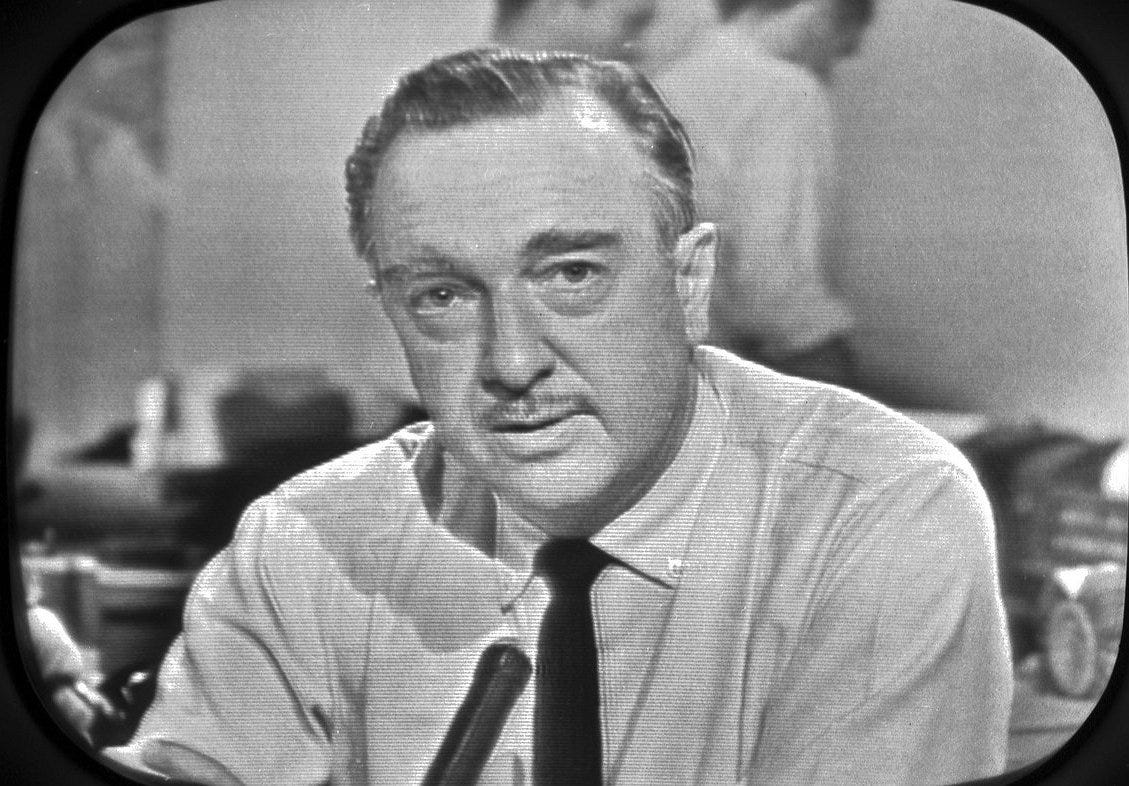Turn it off
On Monday in the fall of 1972, oddly enough on September 11th, CBS anchorman Walter Cronkite decided to end his nightly broadcast with bad news. “Professor Hubert Lamb says a new Ice Age is creeping over the northern hemisphere,” Cronkite began. This could have been a joke, or deadly serious. Nothing in his delivery gave the slightest hint. Cronkite’s face was an advanced messaging machine messaging, a broadcasting Ferrari. He went on: “It won’t be as bad as the last Ice Age 60,000 years ago. Then, New York, Cincinnati and St. Louis were under five thousand feet of ice. Presumably, no traffic moved, and school was let out for the day.” He paused. Again, not a single revealing twitch in that face. “And that’s the way it is, Monday, September 11th, 1972.” I was just old enough to groan over the hoopla when Walter Cronkite said And that’s the way it is for the last time on March 6th, 1981. I understood this was a national ritual, and Walter had been with us for so many crucial moments in history, from the death of John F. Kennedy to the moon landing. But who cared about And that’s the way it is? Was that supposed to be deep? Even as an eleven-year-old, the fawning over the iconic signoff seemed phony to me, an example of the constant self-congratulation in which TV personalities – anchors, particularly – so often indulged. In hindsight, I now realize that in the context of the medium, it was powerful stuff. Cronkite’s famous signoff was designed to convey a message to viewers that they could now safely go back to their lives. It was a promise: the world would hold together, at least until the next day at the same time. The Ice Age broadcast was a perfect illustration. Cronkite was holding copy designed to make you wet yourself, but he smiled and delivered it with a chuckle, conveying the opposite message. “And that’s the way it is”was an expression of confidence, a contract between broadcaster and audience: “I trust you to come back tomorrow. Enjoy the next 23 hours without worry.” Thiswas a message not about the content of the newscast, but about the viewer’s relationship to television and the news itself. It was rhetorical punctuation, a period at sentence’s end. Cronkite was announcing you’d come to the end of your news media experience that day. You could go back to your private life, a thing whose existence was recognized and, at least to a degree, respected. Of course, Cronkite’s routine was clever marketing. People grew accustomed to the tradition of sitting around the television hearing Walter tell it like it is. The signoff was part of the Pavlovian reward. It drew viewers back. But it had another meaning. In that era, there were people who read newspapers from beginning to end. As one former newspaper chain owner put it to me, this was a time when people could say, “I read the news,” and mean “all of it.” The concept of news having an ending still existed. There was a lot that was wrong and deceptive about the era of news Cronkite dominated. News watchers were presented with a highly limited and simplistic vision of the world, one that downplayed or omitted countless injustices, both at home and abroad. Many of those deceptions were chronicled in Manufacturing Consent. But since the seventies and eighties, we’ve moved into a new realm of media messaging. The subtext is dramatically different from Cronkite’s day. Most news consumers haven’t noticed the change, or are too young to know. But it’s an awesome difference, and a terrifying one, if you know what to look for. |
Filed under: #!!# |



Leave a comment